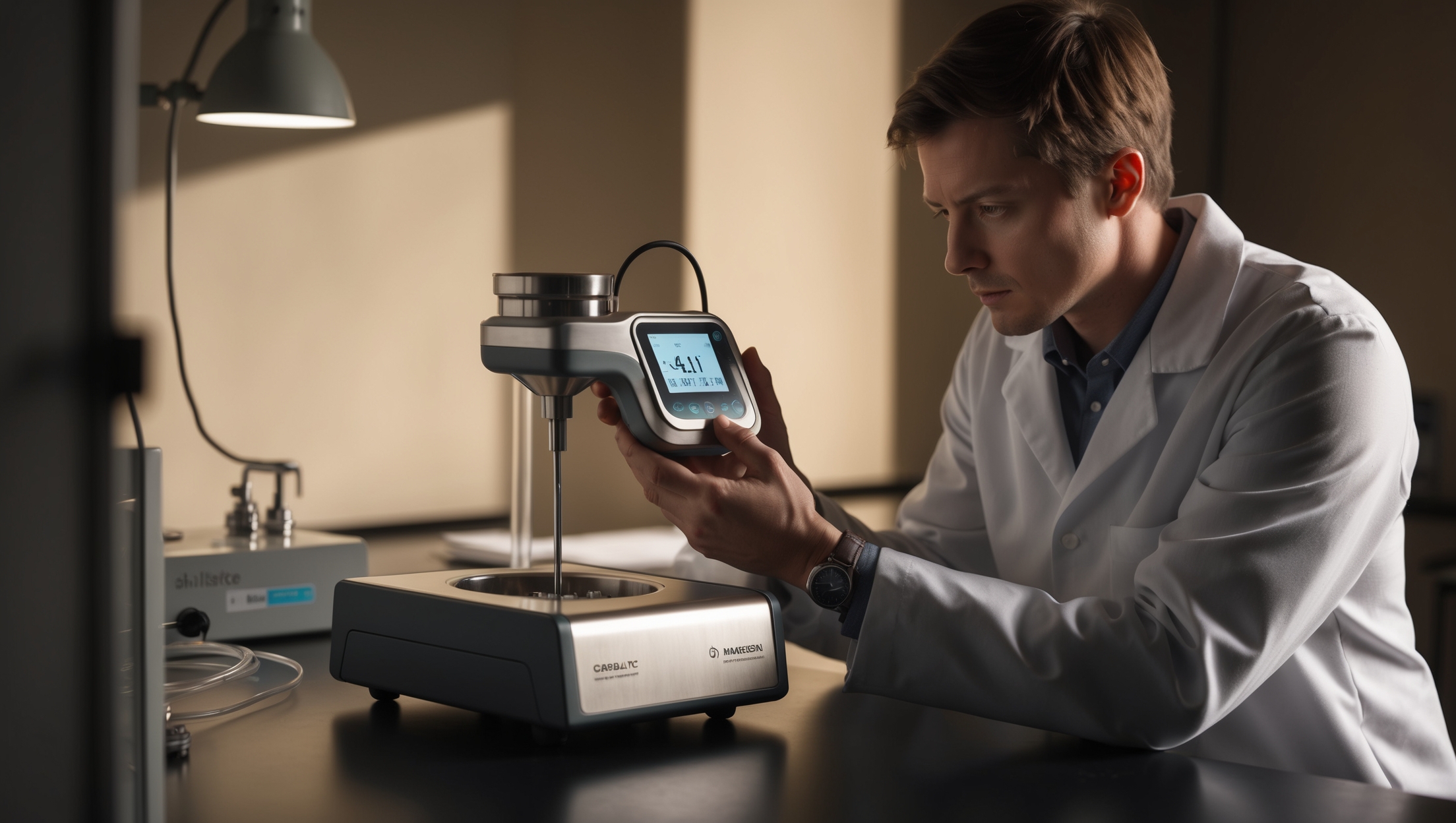Accurate soil moisture measurement is a critical part of modern agriculture, helping farmers make informed decisions about irrigation and resource management. There are various techniques used to measure soil moisture, ranging from traditional methods to advanced sensor-based technologies. In this post, we’ll explore several experimental procedures for measuring soil moisture levels, focusing on both classical and modern techniques, including the gravimetric method, in-situ measurements, and calibration curve development. Each method has its strengths and limitations, and understanding these will help you decide which approach is best for your needs.
Gravimetric Soil Moisture Measurement
The gravimetric method is one of the oldest and most reliable techniques for measuring soil moisture. It involves collecting a soil sample, weighing it, drying it in an oven to remove all moisture, and then weighing it again. The difference in weight represents the amount of water that was in the soil.
How It Works
- Soil Sampling: Collect a representative sample from the field. The sample should be taken from the depth at which you want to measure soil moisture. For accurate results, it is essential to collect multiple samples from different parts of the field.
- Weighing Wet Soil: Weigh the fresh soil sample immediately after collection to prevent any evaporation.
- Oven Drying: Place the soil sample in an oven at around 105°C for 24 hours or until all the moisture is evaporated.
- Weighing Dry Soil: After drying, weigh the soil again. The difference in weight between the wet and dry soil gives you the moisture content.
Strengths and Limitations
The gravimetric method is often considered the gold standard for calibration purposes because it provides a direct measurement of soil moisture content. At Terrestream, we use the gravimetric method to calibrate our Irrigauge sensors in the lab for all twelve major soil types and at a variety of temperatures, as temperature can significantly affect readings. However, this method is labor-intensive, time-consuming, and not practical for real-time monitoring. It is best suited for calibration or validation of other soil moisture measurement techniques.
In-Situ vs. Ex-Situ Soil Moisture Measurements
Soil moisture can be measured either in the field (in-situ) or after extracting the soil (ex-situ). Both approaches have their advantages and drawbacks, depending on the context and the level of accuracy required.
In-Situ Measurements
In-situ measurements involve using sensors or probes to measure soil moisture directly in the field without disturbing the soil. This technique provides real-time data and allows for continuous monitoring. Examples include capacitance sensors, tensiometers, and neutron probes.
- Capacitance Sensors: These sensors, like the Irrigauge, measure the dielectric constant of the soil, which changes with soil moisture content. They are easy to install, provide real-time data, and are ideal for continuous monitoring. However, they need proper calibration for different soil types to ensure accurate readings.
- Tensiometers: Tensiometers measure soil water potential and are particularly useful in understanding the energy plants need to extract water from the soil. They are well-suited for clay soils but may require maintenance to prevent air entry, which can affect accuracy.
- Neutron Probes: Neutron probes are highly accurate but are generally used for research purposes due to their cost and the requirement for handling radioactive materials.
Ex-Situ Measurements
Ex-situ measurements require taking a soil sample from the field and analyzing it in a lab or another controlled environment. The gravimetric method is a prime example of ex-situ measurement. While ex-situ methods can provide highly accurate measurements, they are less practical for ongoing field management due to the need to collect and transport samples. Terrestream also offers an ex-situ calibration service using the farmer’s actual soil for unparalleled precision.
Calibration Curve Development
Accurate soil moisture readings rely on proper sensor calibration, which is why calibration curve development is an important part of soil moisture measurement. Calibration involves comparing the sensor readings with known moisture levels to create a curve that relates sensor output to actual soil moisture content. At Terrestream, we calibrate our in-situ sensors using the gravimetric method for all twelve major soil types, and at a variety of temperatures, as temperature can significantly affect readings.
Step-by-Step Calibration
- Collect Soil Samples: Collect soil samples from different parts of the field, ensuring a range of moisture levels.
- Determine Moisture Content: Use the gravimetric method to determine the actual moisture content of each sample.
- Sensor Readings: Insert your soil moisture sensor into each sample and record the sensor’s readings.
- Plot the Data: Plot the sensor readings against the actual moisture content to create a calibration curve.
- Apply Calibration: Use the calibration curve to adjust the sensor readings for your specific soil type, improving accuracy.
Calibration is particularly important because factors like soil texture, salinity, and temperature can all affect sensor readings. By developing a calibration curve, you can adjust for these factors and ensure that your soil moisture data is as accurate as possible.
Comparing Methods: Which to Use When?
Each soil moisture measurement technique has its pros and cons, and the choice depends on your specific needs.
- Gravimetric Method: Best for calibration and validation due to its accuracy. At Terrestream, we use the gravimetric method to calibrate our in-situ sensors for all twelve major soil types and at a variety of temperatures. Use it if you need a precise measurement or are calibrating sensors.
- In-Situ Sensors: Ideal for continuous monitoring and real-time irrigation management. Use capacitance sensors like the Irrigauge for reliable, easy-to-install solutions. We calibrate our in-situ sensors using the gravimetric method for accuracy.
- Ex-Situ Measurements: Useful for research purposes or when a high degree of accuracy is required. Terrestream also offers an ex-situ calibration service using the farmer’s actual soil for unparalleled precision.
Practical Tips for Measuring Soil Moisture
- Take Multiple Samples: Soil moisture can vary significantly across a field, so it’s important to take multiple samples or install multiple sensors to get an accurate picture of moisture distribution.
- Measure at Different Depths: Soil moisture levels can vary with depth, especially during dry or wet periods. Measuring at different depths helps you understand the moisture available in the root zone.
- Regular Calibration: Make sure to calibrate your sensors regularly. Calibration ensures that changes in soil conditions, such as compaction or salinity, do not affect the accuracy of your readings.
- Account for Soil Type: Different soil types have different water-holding characteristics. Calibrating for your specific soil type helps to ensure that your moisture readings are meaningful and actionable.
Historical Perspective: From Manual Sampling to Modern Sensors
Soil moisture measurement has come a long way from the early days of manual sampling and guesswork. In the past, farmers relied on techniques like the feel and appearance method, where they would grab a handful of soil and judge moisture content based on its texture and ability to form a ball. While this method is still used today for rough estimates, it lacks the precision needed for efficient water management.
The development of the gravimetric method in the early 20th century provided a more scientific way to measure soil moisture, but it was still labor-intensive. The advent of electronic sensors in the latter half of the century revolutionized soil moisture measurement, making real-time monitoring possible and giving farmers the tools they need to manage irrigation with greater precision.
Conclusion: Choosing the Right Method for Your Needs
Understanding the different experimental procedures for measuring soil moisture can help you choose the right approach for your specific farming needs. Whether you’re using the gravimetric method for calibration, in-situ sensors for real-time monitoring, or a combination of both, each method has its place in modern agriculture.
By leveraging the power of accurate soil moisture measurement and proper calibration, you can improve your irrigation practices, optimize water use, and ultimately enhance crop health and yield. With tools like Terrestream’s Irrigauge, FieldLink, and FieldHub, you can stay on top of soil moisture dynamics and make informed decisions to keep your fields productive and healthy.





